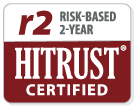This article originally appeared on ICD10 Monitor. You can find the piece here.
He is worried about his own level of exposure to the coronavirus.
It is part of my job to stay informed, but I must say that I underestimated the medical and societal impact of COVID-19. From my West Virginia farmhouse, which is three hours from my Washington, D.C. apartment, I have followed the global spread of infections and the death toll.
As a former administrator at both the University of Washington in Seattle and New York City Health + Hospitals, I have heard firsthand accounts from former colleagues about the heroes at Harborview and Elmhurst. As I write this, I am worried about my own level of exposure from my weekends covering the emergency department, a mindset skewed by spending weekdays analyzing population health data to determine who is most likely to have an adverse outcome if infected.
I am not surprised by shortages of personal protective equipment (PPE) or ventilators, as most systems and businesses don’t operate with that much surge capacity. I am surprised by the prolonged, asymptomatic state of this infection, and how the symptoms can vary from conjunctivitis to fulminant cardiopulmonary failure. There is a feeling that things will get worse before better, and that some parts of our society, such as remote work and telemedicine, will not be the same after this experience.
I have been an ER doctor for more than 20 years, and for the last several, I have done locums shifts at regional hospitals around my healthcare consulting work. Community hospitals are staffed very differently than the big academics, and these facilities have been upstaffing to attempt to manage the anticipated wave of patients. States have relaxed licensure requirements and prohibited elective cases, while the feds have relaxed telemedicine and skilled nursing facility (SNF) regulations. But thus far, where I have been covering shifts, volumes are relatively down. Many patients with low-acuity illnesses, whether through fear or adherence to advice, are staying away. Drive-thru screening, not necessarily testing, has also helped to manage volume. Testing policies vary from place to place and state to state, but where I have been working, tests are reserved only for patients who are being admitted to the hospital. These tests are done primarily to prevent viral spread within the hospital, and anyone tested is placed in an isolation bed until the results prove otherwise: usually five days later.
It becomes apparent very quickly that even the threat of COVID-19 increases the consumption of limited resources. It is the same with PPE, and I personally went off-label very quickly. For patients without a fever or a respiratory chief complaint, I wear gloves and a simple surgical mask, knowing that this patient is the most likely source of exposure. I wear the surgical mask from patient to patient until it gives out, but I throw the gloves away with each use. Patients seem to accept the new attire, even though our communication is limited by both of us talking through masks. I try to keep some distance when I can, and I don’t do my normal physical exam, even though my note template in the electronic medical record (EMR) says I do. Held to the letter of the law, I am committing fraud with each patient I see this way, but I don’t see many regulators at the point of care in a pandemic. For febrile patients I use a gown, gloves, and an N-95 face mask. I wear the same one until it becomes visibly dirty or the straps give out. It quickly goes from my protector to fomite No. 1. But even febrile patients are harder to sort out than anticipated, for last weekend I donned the COVID-19 suit for five patients who ended up testing positive for influenza. I felt bad for “wasting” PPE in this fashion. For most of my shifts, patients fell into three buckets: COVID-19/suspected COVID-19, acutely ill patients, and a growing number of behavioral health patients decompensating from our collective anxiety.
These behavioral health patients, along with the chronically ill, are best cared for at home in the current crisis. At Curation Health, we have been identifying patients who are most likely to have a bad outcome based upon their chronic conditions. We can then provide registries of these patients to our provider partners for targeted outreach, with telemedicine and home delivery for medications and food. Chronic disease doesn’t go away during a pandemic. And managing it this way may be the future of primary care.
Lastly, and most importantly, this too shall pass. We will emerge from this crisis with a vaccine and with a few therapeutic options, but also with a profound public debt. But let’s ensure that we the people emerge from this with a new sense of appreciation and compassion for one another.

